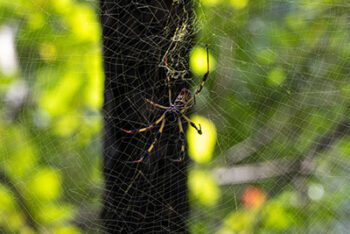
Ticks are a major nuisance for Long Island homeowners each year. Not only do they sneak their way onto you, your family, and your pets, but they can also transmit seriously life-threatening illnesses like Lyme Disease and Rocky Mountain Spotted Fever. Stay in the know when it comes to ticks with these 10 tick facts!
Tick Fact #1: Ticks Aren’t Insects
Believe it or not, ticks are arachnids, meaning they’re more like spiders and scorpions than insects! Like other arachnids, ticks have eight legs, and if you look closely, you can see the resemblance ticks share with spiders.
Tick Fact #2: If a Tick Bites You, It Might Stay Awhile
Unlike other biting pests like mosquitoes, ticks will feed for a long time and will push their teeth deep into the skin of their host, where they’ll remain securely attached, sometimes for days at a time.
Tick Fact #3: Ticks Require Blood Meals to Develop
Ticks have complex lifecycles, and develop from eggs to larvae to nymphs, and finally, into adult ticks. The larvae, nymph, and adult stages each require a blood meal to reach, which is why ticks love latching on to humans and animals—they actually need to!
Tick Fact #4: Ticks Can Spread Multiple Diseases at Once
While ticks will without a doubt feed on humans and their pets, ticks also commonly feed on wildlife like mice, birds, rabbits, and deer. As they move from host to host, they don’t just infect their hosts with pathogens; they also pick up new disease-causing bacteria. Because of this, any given tick could be carrying multiple diseases at the same time, which are transmittable to future hosts.
Tick Fact #5: There Are Around 200 Species of Ticks in the U.S.
In the United States, there are hundreds of different species of ticks; worldwide—even more! On Long Island specifically, we primarily deal with American Dog Ticks, Deer Ticks, and Lone Star Ticks.
Tick Fact #6: Ticks Do Tricks…
Stunt double, anyone? Ticks don’t jump or fly, but they do something called “questing.” Essentially, questing involves a tick waiting in low brush or grass on a host to pass by. Then, the tick will hold on with their back legs, while reaching out their front legs to grab hold of the host.
Tick Fact #7: Ticks Have Long Lifespans
Compared to other pests who may live for only days or weeks at a time, ticks have long lifespans, sometimes lasting up to 2-3 years.
Tick Fact #8: Ticks Can Transmit Diseases to Your Pets, Too
Protecting your yard from ticks is about more than just humans—your pets are also at risk for tick-borne illnesses like Lyme Disease. If your family’s dog loves rolling around in the grass and exploring all the great outdoors, it’s always a good idea to check it for ticks and speak with your veterinarian about tick control products to protect your pup.
Tick Fact #9: Ticks Are Pretty Old
The exact time of origin for ticks is uncertain, however, there are tick fossils dating back to the Cretaceous period, meaning they’ve been around for at least 100 million years.
Tick Fact #10: You’re Most at Risk for Tick Bites in the Summer
While ticks don’t just “die off” in the winter, summer is the peak season for ticks on Long Island, which is why yard treatments are vital to minimizing your family’s risk of tick-borne illnesses.
Protect Your Family and Pets from Ticks this Summer!
Suburban Exterminating offers three easy options to protect you from ticks—choose from our granular or liquid treatment, or go with our tick tubes! Either way is sure to make your yard tick-free, guaranteed!





